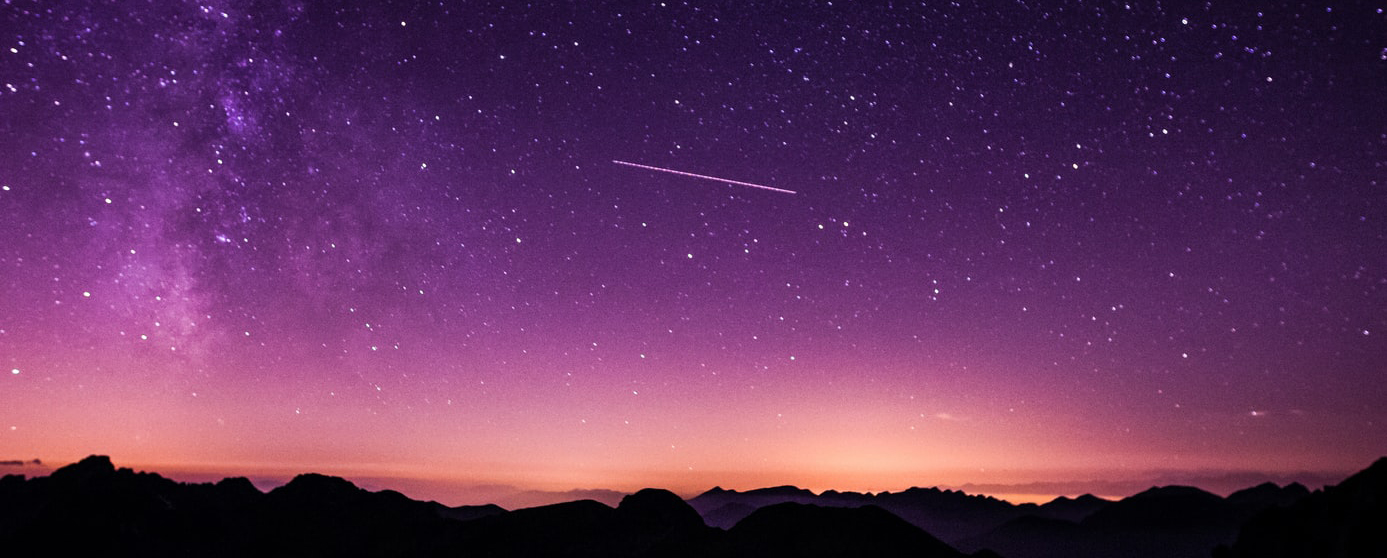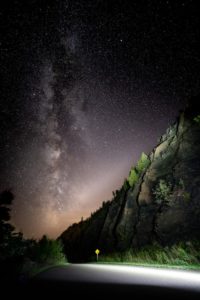
Nine Astronomy Events – Fall 2020 Through December 2021
Oct 29, 2020
Venturing out to observe the wonders of the night sky is a fun way to educate your family and yourself about the amazing space events that take place every month. Pick a dark sky location, look at a star/ planet map (many star apps are available for your phone) and begin to experience meteors, eclipses, supermoons or search for fantastic Milky Way views. The possibilities are endless.
You won’t see these magical events if you don’t know when they happen, so we’ve listed a few major events for the upcoming season, through December 2021. You may also consult any number of websites, including https://earthsky.org/, https://www.space.com/ and https://www.timeanddate.com/ for more specific information.
- Blue moon to glow in Halloween sky
When: On Oct. 31, those outdoors on Halloween will do so under the light of a blue moon that will rise on the final night of the month. Blue moons are uncommon, rising once every two or three years, but a blue moon on Halloween is very rare. The second full moon in a given calendar month is coined a “blue moon.”
- Mercury Transit, Leonid Meteor Shower and Venus-Jupiter Conjunction in November
When: Nov. 11, Mercury passes directly between the Earth and the sun. This rare astronomical event is known as a transit. The only way to safely view this event is with a solar filter, such as special glasses used during a solar eclipse. Also, in November is the peak of two meteor showers, the Northern Taurids (Nov. 11-12) and the Leonids, (Nov. 16-17) the latter being the better of the two. The Taurids is a minor meteor shower, but is known for its fireballs, incredibly bright meteors that can light up the entire sky.
Finally, on Nov. 24, the Venus-Jupiter Conjunction occurs, with two of the brightest planets meeting up in the sky shortly after sunset on Nov. 24.
- Moonless sky in store for peak of the Geminids

When: Dec. 13-14 is arguably the best meteor shower of the year, reaching its pinnacle on the night of Dec. 13 into the early morning hours of Dec. 14. On a dark night, free of moonlight, you can easily spot 50 or more meteors per hour. Also know that although this is one shower you can successfully watch in the (late) evening, the best viewing is typically around 2 a.m. — no matter where you are on Earth. Look near the bright star Castor in the constellation Gemini for the shower.
- Super conjunction of Jupiter and Saturn
When: Dec. 21 marks the final astronomy event of 2020, and one of the most intriguing, as Jupiter and Saturn make an extremely close encounter following the first sunset of winter. When two planets appear close in the sky, astronomers call it a conjunction. However, this meeting of Jupiter and Saturn on the first night of winter will be incredibly close, the closest they have been since 1623.
- March Equinox
When: March 20, 2021 – March Equinox. The Sun will shine directly on the equator and there will be nearly equal amounts of day and night throughout the world. This is also the first day of spring (vernal equinox) in the Northern Hemisphere and the first day of fall (autumnal equinox) in the Southern Hemisphere.
- Total Lunar Eclipse

When: May 26, 2021 is the date of a Total Lunar Eclipse. A total lunar eclipse occurs when the Moon passes completely through the Earth’s dark shadow, or umbra. During this type of eclipse, the Moon will gradually get darker and then take on a blood red color.
- Saturn at Opposition
When: August 2, 2021 marks Saturn at Opposition, the planet’s closest approach to Earth, with its face fully illuminated by the Sun. It will be brighter than any other time of the year and will be visible all night long. This is the best time to view and photograph Saturn and its moons.
- Perseids Meteor Shower
When: August 12-13, 2021 is the Perseids Meteor Shower, one of the best meteor showers to observe, producing up to 60 meteors per hour at its peak. The point from which they appear to hail lies in the constellation Perseus.
- September Equinox
When: September 22, 2021 is the September Equinox, when the Sun will shine directly on the equator and there will be nearly equal amounts of day and night throughout the world.
- Geminids Meteor Shower
When: December 13-14, 2021 is the Geminids Meteor Shower, the king of the meteor showers. It is considered by many to be the best shower in the heavens, producing up to 120 multicolored meteors per hour at its peak.
Check back for further details as many of the events have been impacted by COVID-19.
Visit Texas.gov for a list of Upcoming Star Party Astronomy Events in Texas.
Located in charming Marble Falls, Texas this 240-acre master-planned community is north of Austin and is anticipated to be home to approximately 700 single-family and 250 multi-family residences. A central community area with an outdoor pool, ramada, barbecue area, shaded play area and bocce ball and horseshoe pits are planned. Gregg Ranch outdoor amenities will also include 5.5 miles of jogging and biking trails throughout the community and a dog park. The community is conveniently located at the intersection of State Highways 281 and 71, and is a short drive to Lake Marble Falls, Lake LBJ and the famed Texas Lake and Hill Country. Visit http://greggranch.com/ to learn more.